Matador Network's Blog, page 176
April 25, 2024
US Tourist Faces 12 Years in Caribbean Prison After Not Emptying Bag From Previous Trip
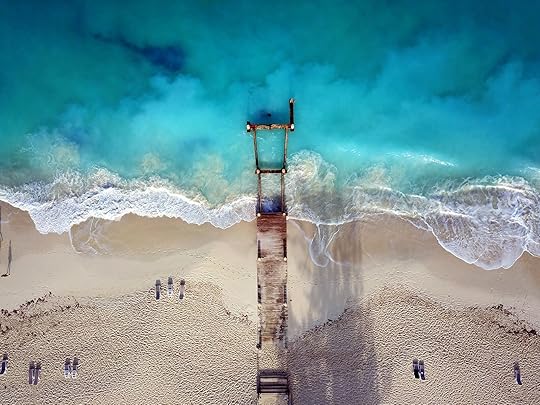
The typical piece of luggage sees a lot go in and a lot come out. Ideally, the bag is emptied entirely after each trip, or at least before the next trip. If not, travelers may inadvertently end up bringing something prohibited into another country.
A man from Oklahoma, Ryan Watson, went on a vacation to Turks and Caicos and is now facing a 12-year prison sentence after he claims he unintentionally left bullets from a previous whitetail deer hunting trip in the luggage he brought to the island. Watson was visiting the island with his wife, Valerie, as well as friends for a 40th birthday celebration. Airport security searched Watson’s carry-on bag as they prepared to return home and found the Ziploc bag of ammunition, according to Global News. While both were initially detained and had their passports confiscated, Valerie has since been let go and is back at home with the couple’s kids.
Watson told Today that he thought his duffel bag was empty before leaving. He also said that he doesn’t recall putting the ammunition in the bag, “but somehow they ended up in there” — and stayed there through to the end of their trip for Turks and Caicos airport security to find.
Turks and Caicos has a 12-year minimum sentence for ammunition possession, regardless of whether there was criminal intent or not.
@nbc10boston We spoke to Ryan and Valerie Watson, who were arrested in Turks and Caicos Islands for allegedly violating the British Overseas Territory’s strict ammunition law. “This was a complete innocent mistake,” said Ryan, who remains there, unable to return to his kids over hunting rounds he says he’d forgotten to take out of his bag. More in the #linkinbio. #nbc10boston #caribbean #news #video #fyp ♬ original sound – NBC10 Boston
Watson isn’t the first American to be held for an ammunition charge in Turks and Caicos since the island tightened its firearms laws in 2022. Three Americans are currently on bail for ammunition or firearms charges, and eight prosecutions have taken place. Last September, the US embassy in the Bahamas issued a travel alert after Michael Grim was detained for ammunition possession.
Each country has its own laws and regulations. An infraction that could be a slap on the wrist in the United States may have drastically more severe consequences elsewhere. Drugs and weapons that are legal in the US top that list, though even something as small as a piece of food could lead to hefty fines. It can be easy to miss something small floating in a pocket or the bottom of a bag, but luckily there’s an easy way to avoid the issue entirely: always unpack completely and double check your bag is empty before packing for your next trip. 
Can Bamboo Architecture Help Save the World? A Builder in Bali Is Leading the Way
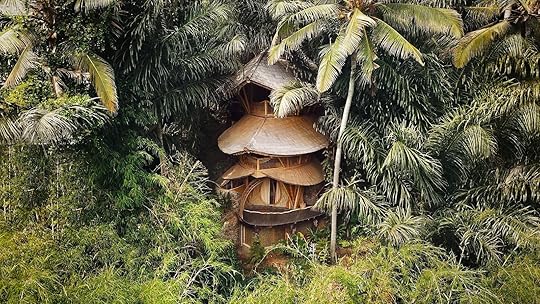
Construction is one of the largest carbon dioxide emitting industries in the world. Building accounts for as much as 36 percent of emissions, 11 percent of which comes from making materials like steel, cement, and glass. Yet in some parts of the world, a sustainable, natural material can lessen the impact: bamboo.
Bamboo U in Bali focuses on inspiring and educating people around the world about bamboo architecture. On the latest episode of No Fixed Address: The World’s Most Extraordinary People, host Micahel Motamedi speaks with Orin Hardy, the founder of Bamboo U, and other members of the Hardy family to learn more about utilizing this natural resource and living in close harmony with nature.
On location in Bali, Motamedi arrives at the Bambu Indah Hotel, run by John Hardy. It’s in Ubud, overlooking the Ayung River and surrounded by rice paddies.
“It’s like a fairy tale,” Motamedi says in the episode. “I’m looking at a treehouse unlike any other treehouse I’ve ever seen in my life. It’s an intricately woven basket with a spiral bamboo staircase suspended in the air floating amidst the trees.”
View this post on InstagramA post shared by Bambu Indah (@bambuindah)
Yet the bamboo-centric design is more than just eye-catching. It’s also sustainable. To hear the full story, listen to No Fixed Address on your favorite podcast platform. 
Rare Mammal Safaris: All About the Growing Travel Trend

Anyone who’s been on an African safari knows all about the thrill of looking for wild animals. The fact that you have to keep your eyes peeled, be patient, and hope you’re lucky enough to see animals like lions and zebras makes the activity feel almost like a treasure hunt.
But after you’ve done a few game drives in Africa, you may realize that spotting famous species like elephants, hippos, and giraffes isn’t actually all that hard. The species are large and follow predictable patterns, and safari guides usually have at least a vague idea of where the animals will be at any given time.
That’s why rare mammal safaris are becoming more and more popular. When you’re on a unique safari to see a rare mammals like aardvarks, Pallas’s cats, or Iberian lynx, the challenge gets kicked up a notch. Safaris to see elusive animals go to unexpected destinations, are generally more active, and require more patience and skill, as looking for a single animal can often take days.
View this post on Instagram
A post shared by Wildlife Worldwide (@wildlifeworldwidetravel)
“There’s this interest out there in seeing these more unusual species,” says Dan Free, general manager of Wildlife Worldwide, which runs dozens of safaris, including 20 focused on seeing rare mammals. “People are looking for their next wildlife fix. It taps into the ‘primitive man’ kind of mindset, the thrill of the chase,” he says. “It’s the challenge of the more difficult things to see. It’s its like people trying to climb Everest. It’s there to be done.”
To learn more about the growing trend of unique safaris to find rare mammals, Matador spoke more with Free to get the scoop on the company’s rare mammals tours, what travelers may see, and what makes them so special.
This interview has been edited for length and clarity.

A clouded leopard in the wild. Photo: Signature Messages/Shutterstock
Matador: Tell us a bit about the company’s rare mammals wildlife tours. How’d they get started?Dan Free: Well, it’s a combination of factors. Personally, I come from a zoological background, and went on to do a graduate degree in sustainability in business. Then after uni, I worked as an ecologist doing protected species surveys, so that was always kind of an interest for me. And increasingly, I became kind of more interested in the rare mammals overseas, and would travel overseas.
What happens is you do an African safari experience, and you fall in love with that. In particular, people become interested in big cats, but then you realize there are various big cats that can be seen around the world. People realize you can see tigers in India or jaguars in the Pantanal. So I jumped to wildlife travel. Everything at the time was quite bird-focused, but it became apparent that there were many people out there that were well traveled and keen to see some of the more unusual stuff. At that point, I came up with a trip to see clouded leopards in Borneo, our first rare mammal tour.
What makes the rare mammals safaris different from the more traditional African safaris?View this post on Instagram
A post shared by Wildlife Worldwide (@wildlifeworldwidetravel)
There’s a lot. With some tours, like our tour to see clouded leopards in Borneo, it operates completely at night. We spend seven nights at a lodge going out with a spotlight.
There’s this whole supporting cast of mammals people were keen to see on African safaris, but are often overlooked. People were tired of being on safari and seeing the big five, and then talking with their guide about “What’s the rarest animal to see,” and their guide says, “oh, aardvark.” The more difficult it is to see, the more appealing it is.
On a normal safari, you may say something like “what will be will be. We’ll see what we see.” But on the rare animal safaris, there’s more thought that goes into searching for specific animals. So they are a bit more full-on in terms of the hours in the field, and a bit more dedicated in their approach. You’ll have it mind that you’re going to see aardvarks today, maybe, because we’ve seen fresh signs, we know there are burrows, so we’re going to target those areas. They’re a little more niche.
They require putting in a little more work to see the species. There’s typically more time in the field, with opportunities to see diurnal (editor’s note: meaning “active in daytime”) species, but quite often, we’ll spend a big portion of the trip doing night drives and trying to see some of the more nocturnal animals.
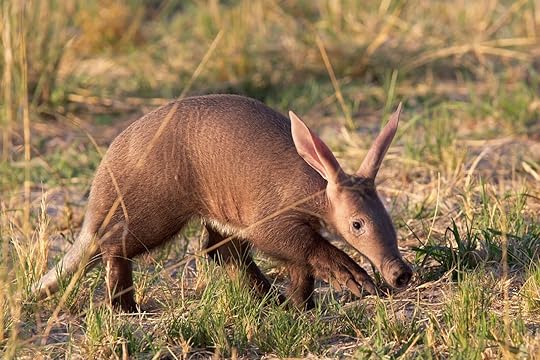
Aardvarks aren’t necessarily rare, but they’re seldom seen. Photo: Thomas Retterath/Shutterstock
Have the trips been popular?The rare mammal trips are some of our best sellers. We come up with trips for species we’d like to see ourselves. If we’d pay money to do the trip ourselves, we know the guests would do the same.
A lot of these mammals, people haven’t even heard of. And that kickstarted the rare animal trend. You know, people are competitive. Anyone can go out there and buy the latest gadgets or see the big five; it doesn’t take any luck to do that. But to go see some of these unusual places and see these animals, thats something to be quite proud of. There’s an element of competition there — the challenge of trying to see something no one else has.
You also spend longer at specific lodges, so even if you don’t see, for example, clouded leopards, there’s all these other crazy mammals — moon rats, five species of civet, slow loris, all these wonderful mammals that you just don’t see during the day. So even if people don’t see the animal they came for, they do come back with having experienced a different trip.
A big thrill of wildlife watching is the highs and lows of seeing these things, or not seeing them. It’s an emotional roller coaster. It’s a bit more of an adrenaline rush. But it’s not always just rare animals — it’s probably more accurate to say elusive mammals. But they’re animals you just don’t see.

Slow loris is a rarely seen primate occasionally spotted on unique safaris in Borneo. Photo: kunanon/Shutterstock
Who are your guides? Are they locals? Certified naturalists?We always have local guides involved, and will also occasionally send leaders from the UK. For example, if it’s a photography-focused trip, we may send a UK photographer.
But the local guides are essential. They’re always qualified naturalists with various qualifications in their field, and usually hold degrees. You need that local knowledge. First, it’s imperative that you’re supporting local populations and guides and providing a financial incentive to protect these areas. But second, you just can’t complete with them with their knowledge. They’re out every day, identifying behaviors and patterns and such. There’s just no way someone could fly in for two weeks and have the same knowledge.
On that note, tell us about your conservation efforts.View this post on Instagram
A post shared by Wildlife Worldwide (@wildlifeworldwidetravel)
It’s quite exciting to work with conservation bodies and conservation efforts. We have partners in all of these countries and they all provide evidence of what they’re doing locally to support the lodges and guides and families associated with them. We’re very picky with who we work with. We work with smaller operators more locally based, rather than larger operators, like a South African-based one dealing with most of southern Africa.
We stay clear of that and just use the smaller guides. It sometimes makes it a bit more tricky — they may not be as slick as some of the bigger outfits, but we recognize the importance of working with those chaps. The whole team comes from a wildlife background, first and foremost, they’re all conservation motivated. We all firmly believe that what we’re doing can be a force for good, and I think that flows through the company.
Every year, there’s a pot of money from a conservation donation built into the cost of trips. That all goes into a pot distributed to the various conservation bodies we work with. We partner with research bodies and NGOs on the ground to do talks, or take guests out for days in the field with experts and scientists and such.

Some tours go to very small towns, like the village of Khichan in India, on a quest to see demoiselle cranes. Photo: Don Mammoser/Shutterstock
How about and the ethics and impact of bringing people into remote, non-touristy areas?By showing people these animals, people are paying to visit areas, which may not necessarily be of interest otherwise as they may not have your typical mainstream species. But now, they’re becoming protected and managed for those species. We’re identifying different reasons for visiting.
Our group sizes are six to eight people with a very responsible guide, and driving at nighttime and moving slowly, so the impact on the ground is spread out over such a wide area that it’s minimal. I feel it’s more than justified, given that these regions are starting to conserve these species, rather than using the land for logging or grazing.
The challenge is to stay ahead of the competition. What else can we see that is not currently offered? And that means speaking to and working with NGOs and conservation bodies, reading research papers, or supporting projects like planting fruiting trees to create wildlife corridors.

A sloth bear in Wilpattu National Park, Sri Lanka. Photo: Martin Mecnarowski/Shutterstock
What’s the most popular tour? Which is the hardest rare mammal to see?The African-based ones, either to Botswana or to the Kalahari to see aardvarks, have been very popular. I think aardvark is just an iconic species that captures the imagination. Also the clouded leopard trips to Borneo, those are probably the most challenging. But Borneo just has so much other good stuff that people aren’t ever disappointed.
A new one is the Sri Lanka tour, for sloth bear and leopard. But at night, we’re also looking for fishing cats, civets and such. That’s a nice one, and a bit more affordable in terms of pricing. It’s certainly a very niche product, and we have to be clear when people call up — we don’t have to vet them, but we just have to make sure they know what they’re signing up for. It’s high risk, high reward.
Rare mammals you can see on safariWildlife Worldwide runs several safaris to some of the most unique places on Earth in the search for rarely seen animals. The main price includes flights from the UK, but all trips have a slightly lower price available for people buying their own international flights from somewhere else. However, there are also a few operators in the US and Canada running unique safaris, as well as local operators in most countries. For example, Chile Nativo runs overnight puma-trekking tours in Patagonia.
Snow leopards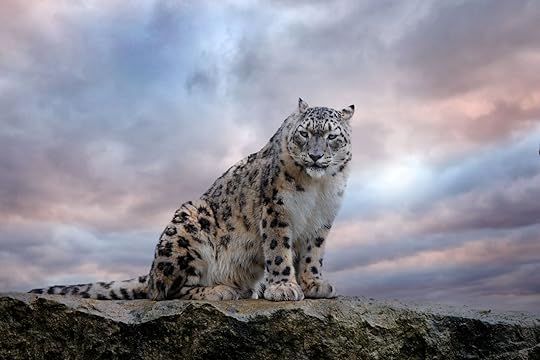
Photo: Ondrej Prosicky/Shutterstock
Snow leopards are large felines that live in the high mountain ranges of Central and South Asia. They can thrive in the snowy and cold environments thanks to thick fur that can be up to five or six inches long (and camouflages perfectly against gray rocks). Sadly, the creatures are classified as vulnerable, with estimates suggesting there are only between 4,000 and 6,500 left in the wild. Poaching and habitat loss are the biggest threats to their survival.
To see them with Wildlife Worldwide, check out the Snow Leopards of Ladakh tour through India. It runs for 14 days and starts at 4,495 pounds (about $5,596) per person, not including international flights. AndBeyond runs slightly pricier trips starting around $7,202 per person for groups of eight; and Discover Altai, based in Mongolia, runs trips to find snow leopards that start and end in Ulaanbaatar, the country’s capital city.
Northwest Bornean orangutans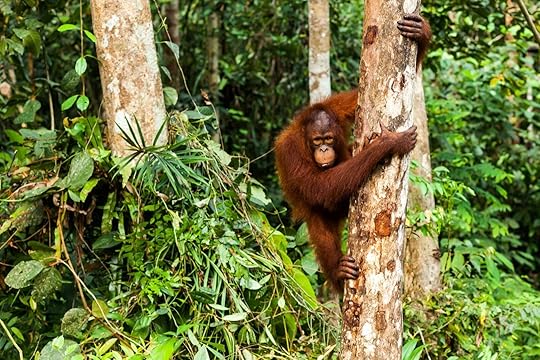
Photo: Denys.Kutsevalov/Shutterstock
Orangutans live in the wild in Borneo, with estimates suggesting there are about 100,000 left in the island’s dwindling jungles, which are being deforested at an alarming rate. Adult orangutans can weigh more than 200 pounds and live for up to 45 years in the wild. The best chances of spotting them are by visiting protected reserves, but that doesn’t guarantee you’ll spot them — just that they’re likely in the area.
Wildlife Worldwide’s orangutan tour visits three wilderness areas to find orangutans, staying at various nature resorts away from cities. The nine-day trip starts at 4,470 pounds (about $5,578) per person, excluding international flights. Orangutan Trekking Tours offers shorter three-to-six day trips based on a rustic houseboat, which may be better for budget-focused travelers as they start around $250 per person per day. Budget travelers may also want to consider this three-night orangutan watching safari from locally owned Orangutan Applause, which includes shared accommodations on a boat with mosquito nets, or a night in a locally run homestay for a small upcharge. It’s very reasonably priced at $404 per person, all in.
Mountain tapir
Lowland tapirs are one of a few species found in Colombia. Photo: Diego Grandi/Shutterstock
Mountain tapirs in Colombia are quite rare, and classified as endangered by the IUCN. They have an estimated population of only around 2,500 individuals, currently declining, which makes them a high conservation priority. Their biggest threat is habitat loss, as cloud forests are being cleared for agriculture and livestock farming. And they’re sometimes hunted for meat.
Unfortunately, spotting a mountain tapir in the wild is quite challenging, as they’re nocturnal, skittish, and usually found in dense undergrowth. Wildlife Worldwide’s trip looks for tapirs around Otún Quimbaya Sanctuary, where you may also spot two-toed sloth as well as spectacled bear and rare birds. The Mountain Tapir Project runs occasional expeditions with the chance to volunteer for a day, and Birding EcoTours runs two-week birding tours with the potential for seeing tapirs. But otherwise, there aren’t that many tour options available, given how rare the species is.
Ground pangolins
Photo: 2630ben/Shutterstock
African ground pangolins, also known as Temminck’s pangolins or steppe pangolins, are one of the four pangolin species native to Africa. They’re not particularly rare, but they are elusive, due to being nocturnal and their solitary habits. However, their populations are decreasing, so they could become endangered in the near future. The biggest threats to ground pangolins are habitat loss due to agriculture, as well as illegal hunting for their scales, which are used in traditional medicine in some parts of Asia.
Spotting ground pangolins is a challenge as they’re excellent burrowers and spend a good portion of their time underground. Wildlife Worldwide’s trip is on the more luxurious side, starting at more than $13,000 per person for eight days. But you’ll stay at a high-end lodge on a private reserve, spending days and nights looking for species like pangolin, aardwolves, leopards, honey badgers, and more.
For something a bit more budget, you can book a few nights at a hotel like Pangolin Chobe Hotel in Botswana and try your luck spotting pangolins on safari, or Sangha Lodge in the Central African Republic. The latter offers speciality night and spotlighting walks to try to find white-bellied pangolins, as well as other rare mammals. 
The Real Reason You Cry at Movies on Flights

Airlines have done a decent job curating the menu of films available on their inflight entertainment systems. Depending on the carrier (some are more strict than others,) it’s rare to stumble across a movie or series with lots of naked bottoms, drug abuse, and terrorist events, which is excellent. I’d rather not watch Idris Elba passing notes around a hijacked plane while sitting at 36,000 feet. I did, however, make the rookie mistake of watching A Star is Born for the first time on a long-haul flight to Australia, which left me uncontrollably howling like the baby a few rows back and hitting the call button for napkins to blow my nose.
Crying on planes is a common phenomenon — so much so that Virgin Atlantic has trialed “weep warnings” before movies it deems emotional to help passengers make emotionally sound decisions. These were first introduced in 2011 after the airline ran a Facebook poll that found that 55 percent of flyers agreed they had experienced heightened emotions while in the air.
But why do you cry more on a plane? The scientific community has only dipped its toe into research, but there are theories.
In a study that surveyed 1084 adults in the US who had watched a film on a plane in the past 12 months, a team of researchers from Cambridge, Massachusetts, found that 25 percent of participants reported crying at movies in the air and 22 percent cried on the ground. One of the researchers, Paul Wicks, PhD, of PatientsLikeMe, states the “phenomenon” might well be a social construction fueled by celebrities telling of crying fits in click bate reporting and the fact that during a flight, there are no distractions, we’re not mindlessly watching content like we can do at home. Because of this, we are more emotionally invested in what we are watching, and Wicks argues that more people will remember and recall their emotional state more clearly.
Other studies point to physical changes in the airplane environment that can make people more susceptible to emotional highs and lows. Mild hypoxia, for example, is a condition in which the body’s tissues are deprived of adequate oxygen supply, and it typically occurs due to the decrease in atmospheric pressure as the aircraft climbs. “These lower oxygen levels can affect your brain and how you process emotions,” says consultant practitioner Dr Ahmad to Matador. Ahmad states that mild hypoxia can lead to people feeling “stressed, anxious, or experiencing mood swings.”
As many of us feel anxious while flying, mild hypoxia might exacerbate this feeling. The body’s response to low oxygen can mimic some stress symptoms, leading to feelings of anxiety or irritability.
The impact of mild hypoxia on flyers’ emotions is a complex topic with ongoing research. It’s important to note that healthy individuals usually don’t experience severe symptoms at these commercial flight altitudes. People have varying tolerances to hypoxia. Some individuals might be more susceptible to emotional changes at lower oxygen levels than others.
Vikas Keshri, psychotherapist and clinical director at Bloom Clinical Care Counselling and Therapy Services suggests that changes in our emotional state might also be caused by other environmental factors. “We’re in a confined space with limited control, dealing with potential turbulence and unfamiliar noises,” says Keshri. This, he states, could lead to a range of emotions as our bodies stay alert in the heightened environment.
And, of course, we can’t deny that travel can be emotionally charged. Saying goodbye to loved ones, navigating airport hassles, and the general stress of flying can leave you more vulnerable. This underlying emotional current can make you more receptive to the movie’s impact. Couple this with other environmental factors such as the dimmed cabin lights, none of our usual daily distractions, and no cell phone, and it’s easy to see how we might come to feel isolated and more easily triggered.
So, if you’re concerned about sobbing embarrassingly, don’t be. You’re in good company, but perhaps steer clear of My Girl. 
April 24, 2024
Learning the Importance of Opening Up On a New Wellness Cruise That Partnered With Deepak Chopra

Not that long ago, as my wife and I watched the conclusion of an emotional TV series, I found myself sobbing. I was slightly embarrassed at what was happening. It’s a show for god’s sake, get a grip. I stopped myself by laughing, but I didn’t really want to stop, it was cathartic. The last time I cried like that was when I was going through a divorce 14 years ago. Perhaps kids are raised differently today, but men of my generation — Gen X — were told not to cry. It was weak and unmanly, and I was a man.
I got the chance to take a close look at this belief on a wellness cruise that started in Panama City, Panama, and ended in Acapulco, Mexico. Swan Hellenic, a boutique luxury small-cruise line, partnered with Chopra, a company founded by wellness figure Deepak Chopra, for its first Explore and Restore wellness retreat itinerary, which includes daily yoga and meditation and a workshop series focused on personal growth. I am used to wellness-inspired activities. In the small town where I live, meditation and yoga abound, as do shops where you can buy crystals and all-hemp clothing. I’m no stranger to introspection and self-examination. This combination of cruise and personal growth intrigued me and off I went with my wife to accompany me.

Yoga class on shore during the Chopra Swan Hellenic wellness cruise. Photo: Carlo Alcos
On day two, after spending less than 24 hours on the ship, cruise passengers were sharing intimate stories of their lives with complete strangers during the first of four workshops. These sessions were led by Jennifer Johnson, a highly skilled facilitator with over 20 years experience who brought ease and humor into the workshops. “I have a river of joy that flows through me for no damn good reason, it’s just there, and you have to be able to access that,” she told me later when I asked her why using humor was important for her.
Toward the end of that first workshop, when there was time for one last question, my hand shot up before I could stop it. The microphone was handed to me. I was one of three men in a room of about 25 and we’d so far only heard women speak. “I feel compelled to bring a male voice to this,” I started. I went on to say that this was a situation that I am very accustomed to, often being the only man among a group of women who are trying to better themselves. “Where are the men?” I wanted to know. And when it’s still men running this world, what does it mean that there are so few here?
 Taking the mic during one of the personal growth workshops. Photo: Swan Hellenic/Linn Hottgenroth
Taking the mic during one of the personal growth workshops. Photo: Swan Hellenic/Linn Hottgenroth Photo: Carlo Alcos
Photo: Carlo AlcosLater at dinner, while we feasted on a gourmet five-course meal in the ship’s beautiful restaurant, other guests thanked me for speaking up. One of them said, “My husband is of your ilk.” But where was he and others like him? This was something I thought about, this lack of men, over the next six days. I thought about it during our daily yoga and meditation practices, sitting on the balcony of our stateroom, staring out at the ocean from a deck lounge chair.

Photo: Carlo Alcos
It wasn’t all I thought about, of course. We were, after all, on a cruise that stopped at locations in Costa Rica, Honduras, and Mexico. We did yoga on a beach and swam in the sea. We had cultural experiences, eating local food and witnessing traditions that have been passed down generation after generation. We snorkeled with brightly colored fish. From the boat we watched dolphins play, sea turtles come up for air, and whales skirt the ocean surface. The ship was immaculate, the food top notch and plentiful, and the service over-the-top and friendly. There wasn’t a moment where I didn’t feel an immense sense of gratitude for where I was and what I was experiencing.
But still I wondered what it would take to get more men to attend workshops like these. From my experience, the yoga classes that I would see more men at had names like “Yoga for Rock Climbers” or “Power and Strength Yoga.” Do we need to trick them? “I think they have to see more men,” Johnson says. “They have to feel like they’re not going to be the only male in the room.”
Representation is something that I can understand. As a visible minority, I know firsthand the power of representation — the “permission” one gets when they see someone they identify with in a space that doesn’t typically include people who look like them. “It used to be (that) men would come to the events that their wives brought them,” Johnson says. “Usually their wives didn’t tell them the whole story and they would drag them along. And then it became more and more that men were coming and they were identifying. I used to see one or two men in a group, now some of our events are 25 percent male. That’s a big shift.”
So there’s hope.

Photo: Carlo Alcos
I asked Johnson what this world might look like if more men led self-examined lives. “I don’t think there would be as much war, as much fighting if we could all have compassion and come together,” she says. “The most amazing men are men that can get vulnerable. They’re going to have the best relationships. They’re probably going to be great at their work or anything they decide to do because they can touch in and use that to be the catalyst for whatever their creation is.”
For my part, I will continue to show up. Maybe I’ll be the man that someone else sees, that makes them feel less awkward about being there. When I think about that man I was who forced himself to stop crying, I think about how much further he had to go to shed the ridiculous ideas of what it is to be a man. Experiences like this help; they are steps on the journey.
Beyond luxuriating in the comforts, the food, the onboard spa, and the wellness retreat, it was the relationships that I witnessed being formed among the guests that struck me the most. When it was time to say goodbye there were many hugs and tears between people who bonded over their shared humanity. I wondered if there was something special about offering a Chopra wellness retreat on a cruise because it seems an unlikely combination.
“It’s just such an opportunity for connection in a different way,” Johnson says. “You’re allowing yourself to be taken care of, you’re allowing yourself to be vulnerable. There’s nothing else to do but just experience being alive.” 
More Than 30% of Flights Were Delayed on These Two Airlines in 2023

It seems like everyone had a horror story about flying last year. A recent analysis from NerdWallet, based on Bureau of Transportation (BTS) arrival data, confirms that air travel was something of a mess in 2023. Two domestic airlines, in particular, saw nearly one-third of their flights delayed last year: Frontier and JetBlue.
Both Frontier and JetBlue delayed more than 30 percent of their flights in 2023. Frontier delays were slightly more prevalent at 30.71 percent compared to JetBlue’s 30.4 percent. The two airlines also canceled the most flights last year at 2.13 percent and 2.1 percent, respectively.
Spirit Airlines saw the third highest number of flight complications in 2023, with 28.59 percent of its flights being delayed and 1.7 percent of its flights being canceled.
In order from most to least delays, Hawaiian, American, Southwest, and United saw between 25 and 20 percent of their flight times pushed back, while Alaska, SkyWest, Delta experienced the least number of delays, falling between 20 and 15 percent of flights.
According to the data, there’s no direct correlation between airlines that are likely to experience delays and airlines that are likely to cancel flights. Despite ranking seventh on the list of most delayed flights at 20.27 percent, United ranked fourth for flight cancellations at 1.4 percent. Hawaiian, by comparison, had the fourth highest number of delayed flights (23.41 percent) but canceled fewer flights than United (1.3 percent). Of the airlines analyzed, Alaska canceled the fewest flights in 2023 at 0.81 percent.
Overall, Delta had the highest percentage of on-time flights (82.61 percent) and one of the lowest percentages of canceled flights (1.02 percent).
Several factors can impact flight delays. According to the BTS, in 2023, late aircraft were the most common cause, followed by air carrier delays and National Aviation System (NAS) delays. Weather accounted for less than one percent of flight delays.
While flight disruptions are unpredictable, and perhaps inevitable, knowing which airlines are most likely to experience delays and cancellations can help you book smarter. The Department of Transportation (DOT) also has a few other tips for avoiding delays: prioritize early departure times and nonstop flights, fly out of less congested airports whenever possible, and call your airline before you leave for the airport to see if your flight is on time.
Of course, the DOT also recommends that air travelers know when they’re eligible for compensation in the event of an issue — whether that’s a delay, cancellation, baggage delay, or case of involuntary denied boarding. 
You Can Now Take a Fitness Class in the Louvre Before It Opens to the Public

The largest museum in the world, the louvre, likes to shake things up from time to time. Apparently not content with just being a world-class museum home to a collection of 500,000 art pieces and objects that more than 7 million people come to see every year, in 2005, the museum became a filming location for the movie The Da Vinci Code, and in 2018, it became the set for Beyoncé and Jay-Z’s ‘APES**T’ music video. In 2024, the year of the Paris Summer Olympic Games, the museum is turning into a fitness studio.
Starting today, April 24, and until May 31, the Louvre will host 90-minute fitness classes taught by renowned French dancers, choreographers, and sport coaches. The classes will take place within some of the most prestigious areas of the museums, including the immense Marly Courtyard with its glass ceiling, the Khorsabad Courtyard where the remains of an eighth-century-BC Assyrian city are kept, the Caryatids Room, used as an ornate reception room by the kings of France, and the underground chamber where the medieval origins of the louvre are preserved.
 Marly Courtyard. Photo: Cesare Andrea Ferrari/Shutterstock
Marly Courtyard. Photo: Cesare Andrea Ferrari/Shutterstock Khorsabad Courtyard. Photo: jeafish Ping/Shutterstock
Khorsabad Courtyard. Photo: jeafish Ping/Shutterstock Caryatids Room. Photo: nikolpetr/Shutterstock
Caryatids Room. Photo: nikolpetr/ShutterstockThe classes will include yoga, cardio, disco dance and dancehall-inspired workouts that will allow you to see some of the museum’s most precious items in a totally different context. The classes will start at 8 AM before the Louvre opens to the public, however, the museum will open its doors at 7:15 AM for those attending the classes.
The classes costs between $40.65 (38€) and $16 (15€) and will take place daily from April 24 to May 4 and from May 22 to May 31, except Tuesdays, Sundays, and holidays. Booking a fitness class gives you a free pass to visit the museum the same day. You can book a spot for one (or all) of the classes online. 
An Inspiring New Docuseries Is Changing the Narrative on Traveling on the Autism Spectrum

According to a study from Autism Travel, 87 percent of families with someone on the autism spectrum don’t travel. For most it’s not because of lack of desire, but because of a lack of sensory-friendly options. The new docuseries Traveling the Spectrum sheds a light on how choosing the right autism-friendly destination can make travel dreams a reality for those on the spectrum.
Certification programs like Autism Double Checked and Autism Travel are helping families navigate spectrum-friendly travel. Yet there’s still a long way to go when it comes to understanding what’s needed to make travel more accessible. With one study finding that 1 in 36 8-year-olds in the United States are on the spectrum, and the World Health Organization estimating that 1 in 100 children are on the spectrum worldwide, the more people can learn about the reality of traveling with autism the better.
Traveling the Spectrum focuses on three families who travel to Myrtle Beach, South Carolina. The six episodes are a window into the challenges and joys each family encounters. There’s 28-year-old Max Tilk from Michigan, who, along with his brother Jake, has built a following on social media for showing his day-to-day life. Brayden Gielink, 14, travels from Ohio with his family. The youngest person the docuseries follows is Mikko Hill, a 2-year-old girl from Texas whose family hasn’t previously had the opportunity to travel.
Each episode is unscripted for a behind-the-scenes look as each family visits accessible activities and accommodations in the Myrtle Beach area. As Mikko’s dad, a military veteran, says in the trailer, it’s easy to get stuck in the comfort zone, but the “comfort zone can be detrimental.” Comfort zones are pushed, but considering the Myrtle Beach area was the first autism-friendly certified destination by Champion Autism Network, there are plenty of opportunities for exploration.

The Hill family on a boat ride in Traveling the Spectrum. Photo: Traveling the Spectrum
The trailer was recently released for a preview of what’s to come. However, the series has yet to be picked up by a major streaming service to make it available to a wide audience. On the Traveling the Spectrum site, you can pledge your support to show that this is the type of content that people want to see on their streaming feeds as the producers work to find placement. Ultimately, the series aims to “help pave the way for a future where every journey is accessible, and affirm that the stories and experiences of these families are valuable and necessary.” Giving an inside look at the realities of traveling on the spectrum is an important step in wider understanding. 
Experience the Best of West Virginia Hospitality at the Tygart Hotel

The paintwork isn’t quite dry at this newly opened boutique hotel in downtown Elkins but the ribbon is cut and the bar is fully stocked. If you’re a Randolph County local or an old-timer at the Mountain State Forest Festival, you’ll recognize the fetching red-brick edifice. Setting out to capture the elegance and character of the 1906 building and inspire a new wave of travelers to linger in West Virginia, the Tygart Hotel by Ascend Hotel Collection is the result of a three-year reboot of the former Hotel Gassaway.
The hotly-anticipated renovation comprises 56 cozy guest rooms, a refined restaurant, and a fun cocktail lounge. An appealing location on Davis Street within walking distance of downtown attractions singles the Tygart Hotel out as the most convenient place to stay in the heart of the mountain state.
We hope you love the Tygart Hotel! Just so you know, Matador may collect a small commission from the links on this page if you decide to book a stay. Listed prices are accurate as of the time of publication.
Elegant, boutique rooms at Tygart Hotel Photo: Booking
Photo: Booking Photo: Booking
Photo: Booking Photo: Booking
Photo: Booking Photo: Booking
Photo: BookingNo two rooms at the Tygart Hotel are the same. All lodgings are classically appointed with tip-top upholstered beds that’ll see you right after a tough day on the trails or one too many craft beers. Regional artwork and custom fixtures add a personal touch while views scour either the Appalachian Mountains or peer over historic Elkins.
Traveling to West Virginia? Check out Matador’s West Virginia accommodations guides: 11 Airbnbs near New River Gorge National Park Perfect for Outdoor Adventure Where To Play, Eat, and Stay in Mercer County, West Virginia
Every amenity is accounted for, including a flat-screen television, a mini fridge, coffee-making facilities, and that all-important Wi-Fi for adventure planning. Each king room has a gleaming modern bathroom with a large walk-in shower and ADA-compliant units come with a tub. Suites accommodate up to four guests with a sleeper sofa for the kids. This pet-friendly hotel welcomes two furry friends per room for a reasonable fee.
A daily continental breakfast buffet is part and parcel of a stay at the Tygart Hotel. You’ll also benefit from free parking and complimentary bike storage on the premises.
Taste Appalachian cuisine and creative cocktails
View this post on Instagram
A post shared by Tygart Hotel (@tygart_hotel)
Comfort fare gets a glamorous makeover at Oxley House courtesy of the freshest mountain state ingredients and house-made dressings. The menu has launched with flavorful dips served with warm flatbread, crab cakes, and prime steaks dished up with seasonal greens. Lunch and dinner are served in the sun-soaked bistro accented with floral decor and pendant lighting. Make no mistake that this is the domain of business travelers and weary wayfarers: Tygart Hotel is a pillar of the community and you’ll be breaking bread in the company of local folk.
Punchy signature cocktails and mocktails cater to all palates at the Oxley House Cocktail Bar. Oxley Fashion is a rehash of the enduring old fashioned and Lemon Pound Cake is practically pudding. If you’re a mixologist in the making, you can put your skills to the rest and build your own mule or enroll in one of the ad hoc masterclasses. The bar hosts frequent music events on Fridays and Saturdays where you’ll mingle to a live soundtrack of guitarists and jazz artists.
The downtown setting on Davis Street makes it easy to explore other places to eat while your car stays in park. The storied C.J. Maggie’s is a two-minute walk from the hotel. This neighborhood grill is your one-stop shop for wood-fired pizza, chicken dinners, street-style tacos, and gourmet sandwiches. Big Timber Brewing Company is your nearest taproom serving flights of Mexican lager, IPA, and root beer.
Delmonte Market has you covered for trail mix, artisanal souvenirs, and coffee on the go.
Exploring Randolph CountySurrounded by the beautiful Appalachian Mountains, Elkins is a basecamp for outdoor adventures in West Virginia. Hiking, biking, horseback riding, and cross-country skiing on the Allegheny Highlands Trail is a highlight. This 26-mile multipurpose track follows the West Virginia Central and Pittsburgh Railway. The Monongahela National Forest is another popular destination for trout fishing, canoeing, and tubing.
Vintage steam and diesel locomotives operated by Mountain Rail West Virginia depart from the historic depot in downtown Elkins just two blocks from the Tygart Hotel. Shorter railroad excursions are designed for the whole family whereas the biannual Murder Mystery Wine Train outing is strictly for those over 21.
The Tygart Hotel is an ideal place to stay for the Mountain State Forest Festival. Held every fall, this week-long celebration is one of the oldest cultural events in West Virginia and sees a bonanza of parades, concerts, forestry exhibits, lumberjack contests, arts and crafts, amusement rides, and food.
To round off an energetic stay in Randolph County, you’ll receive a complimentary day pass for the Elkins YMCA fitness center and swimming pool when checking in at the Tygart Hotel. 
The 10 Most Popular Countries For Road Trips, and How Much Gas Costs in Each

We all enjoy a grumble, especially about the price of gas, but recent research by UK car financing company Moneybarn suggests that the US is one of the cheapest countries in the world for filling up a vehicle.
Moneybarn looked at various factors such as the availability of EV charging stations, road quality, and average price of fuel to paint a picture of how that differs by country. They also looked at the annual search volume on Google for “road trip” and brought us a list of the top ten nations in the world for driving.
It might come as a surprise that the US reigns supreme as the happiest place for drivers. The US has the highest car ownership rate globally, with an estimated 80 percent of the population having access to a vehicle. This widespread car ownership makes road trips and scenic drives highly accessible. The nation has a staggering almost four million miles of roads. This vast network offers us so many options for a road trip, from scenic byways to steep and thrilling routes and historic cross-country drives through ghost towns.

paulista/Shutterstock
The study also reveals that the average price of gas in the US sits at around $0.91 per liter, while diesel comes in slightly higher at $1.05 per liter. This translates to an average cost of $0.98 per liter. So you can drive happy this summer across many major road trip routes knowing that you’re getting one of the best deals compared to many other countries.
Moneybarn’s study also identified other countries that scored highly for driver happiness. Here’s the top ten:
1. United States ($0.98 per liter)2. Norway ($2.04 per liter)3. Japan ($1.06 per liter)4. Canada ($1.26 per liter)5. Iceland ($2.28 per liter)6. Australia ($1.15 per liter)7. Spain ($1.67 per liter)8. Sweden ($1.78 per liter)9. France ($1.94 per liter)10. Finland ($1.91 per liter)
Photo: Olena Tur/Shutterstock
Norway comes in second. The average price of gas and diesel is $2.04 per liter, but the breathtaking scenery and a focus on sustainable transportation solutions may play a role in Norway’s driver satisfaction.
Norway’s fjords were made for road trips. Some of the most popular routes take drivers through The Lofoten Islands in Northern Norway, along The Atlantic Road on the west coast, known for its series of bridges that seem to defy gravity, and past The Geirangerfjord, a UNESCO World Heritage Site and one of the most beautiful fjords in Norway.
Coming in third was Japan. Efficiency and culture of courtesy on the roads could be contributing factors to Japan’s ranking, as well as epic routes along the Shimanami Kaidō with views of the Seto Inland Sea, the coast-to-coast across the entire island of Hokkaido, and the temple viewing road trip on the island of Shikoku.
Similar to the US, Canada has some of the best road trips in the world, but the average price of gas and diesel is higher, costing around $1.26.
Following Canada is Iceland. And while nothing is cheap in the country, including gas ($2.28 per liter), Iceland is a great place to explore by car. The island has a well-maintained main road, Route 1, also known as the Ring Road, that circles the entire country. This makes it easy to plan a road trip and see all the major sights. 
Matador Network's Blog
- Matador Network's profile
- 6 followers



